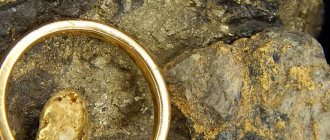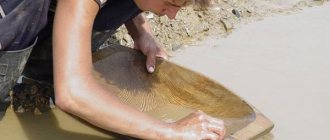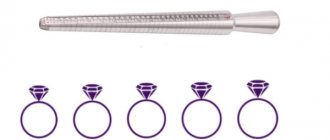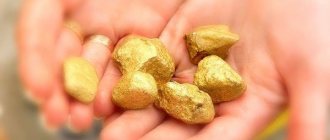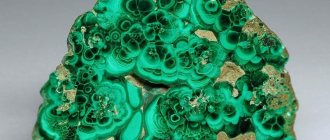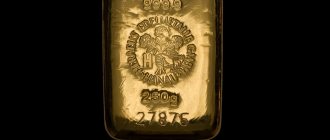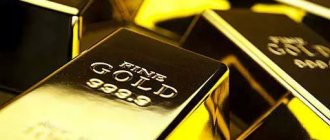Gold is a precious metal that has been of great interest to millions of people around the world for many decades. There is information that during the period of its existence, humanity managed to extract over 130 thousand tons of solar metal, and most of the extracted resource was always involved in the jewelry industry.
The ancient Egyptians and Greeks were the first to start mining gold. In those days (and this was before our era!), a method of extracting gold was used by washing sand, which probably could contain metal. For such manipulation, devices were used that resembled a sieve, for example, among the ancient Greeks it was lamb skins (fleece). They were placed on the bottom of a mountain river at the place where it rolled (after all, their waters eroded gold-bearing rocks in the mountains). So, after some time, grains of gold got stuck in the hairs of the skin, after which the fleece was removed from the water and shaken out.
Gold panning
Today, an increasing number of people are interested in the technology of artisanal gold mining described above, which does not require the construction of special plants or the use of high-tech equipment and chemicals. Amateur gold mining is widespread in many countries of the world, even though it is impossible to extract large volumes of the precious metal using the washing method, although many amateurs manage to find large nuggets. In countries with a low level of economic development, the gold washing method is the only one existing, since it does not require financial investments.
Where do miners find gold in Russia?
The largest Au deposits are located in the Far East and Eastern Siberia. The third place is occupied by the Urals.
Below is a list of rivers containing the largest reserves of the yellow metal - this is where I recommend finding and washing it.
Yellow metal satellites
Companion rocks that play the role of “witnesses”, suggesting that gold-bearing veins are somewhere nearby:
- silver;
- pyrite;
- quartz;
- lead;
- galena.
Pyrite is the most insidious companion of gold, because beginners often cannot distinguish it from a real noble metal: they find a mass of pyrite crystals and rejoice at the happiness that has fallen on their heads, and then they are disappointed.
Meanwhile, gold can not only be washed from the river, but also found inside inconspicuous-looking pieces of rock scattered along the shore. If a piece of mineral glitters with a yellow tint that does not change when light is refracted, there is most likely gold inside. This breed should be crushed and washed.
Why do they wash gold in the river?
Extracting gold from the river is the most accessible way for single miners to get hold of the precious metal. To find it in river beds and wash it out of rock, you do not need to purchase expensive equipment and hire personnel, as with industrial mining from the subsoil.
There is definitely Au in the rivers flowing near gold deposits; there is a simple popular scientific explanation for this. Temperature changes and other natural phenomena destroy gold-bearing ores, small particles of the precious metal are washed away by rain, melt and flood waters into rivers and streams. After which, being heavy, gold settles in certain places:
- terrace deposits are found on rapids and sills that rise above the level of the banks of watercourses, as well as in dry riverbeds;
- Bottom placers should be looked for in bedrock channels (in valleys);
- spit deposits are formed on river spits, whether sandy or pebbly.
It is good to find and wash small gold grains and large or small nuggets in bedrock, places where the flow of water slows down (the mouths of mountain streams, turns of riverbeds), natural “traps” (near boulders lying in a mountain river, on shallows, in pits under waterfalls, near fallen trees blocking the river flow).
The relevance of independent searches
Every year, millions of people search for deposits and pan for gold. This activity attracts different categories of people, including both beginners and experienced professionals. First of all, gold mining is popular in poor countries, where a large percentage of the population is looking for an opportunity to earn extra money in order to somehow survive. These are African countries, India, New Guinea, the Philippines, Indonesia, and Latin American countries. In countries where the level of income is more favorable, tourists who like the atmosphere of a hike and a gold rush go for metal, as well as experienced geologists or people who devote time to searching for deposits and panning for gold for many years.
Is it possible to mine gold in Russia?
Until 2016, only large legal entities had the right to engage in gold mining. The activities of private miners who dared to wash the precious metal were completely illegal and criminally punishable.
Currently, private individuals have the right to extract gold from deposits - under two conditions:
- individual entrepreneur registration;
- availability of a license or agreement with a gold mining organization that has all the permits for the development of gold mines.
Obtaining a license is a long and troublesome procedure; concluding an agreement with a licensed gold mining company is a much simpler path.
Industrial mining of precious metals brings companies quite high incomes. And private miners who want to pan for gold using the artisanal method are not competitors for them. So we can reach an agreement.
What laws regulate gold mining?
Business entities have the right to engage in gold mining in the Russian Federation, guided by the federal law “On Subsoil”, after the adoption of a number of amendments allowing both legal entities and individual entrepreneurs to mine gold from the beginning of 2022. Any private miner is given the opportunity to rent a plot of land of up to 0.15 square meters for a specified period, which is enough to extract up to 10 kilograms of precious metal.
A few more conditions must be met:
- obtain metal only by surface method;
- exclude the use of explosives;
- take soil only up to 5 meters deep.
If you wash precious metals without a license or an agreement with a company that has one, this activity is still punishable under Art. 191 of the Criminal Code of the Russian Federation. And violation of these requirements threatens with serious sanctions.
Permitted Miner's Tools
Tools that help you find and wash precious metals:
- Mini-drag for pumping rock from the bottom of the river (no deeper than 5 m) and washing it away.
- A tray in which it is convenient to wash the rock by hand.
- A metal detector that detects the presence of metal in the soil. A conventional device reacts not only to gold, but also to any metal, so I advise you to use a special metal detector with a sensor that can be easily configured specifically to search for gold.
What is a tray and why do you need a magnet?
A tray is a special device for washing rock and separating Au from it. With it you can do without a mini-dredge and get soil out of the river with an ordinary shovel.
The magnet helps separate black sand from base metals from Au.
In addition to the tray and magnet, I advise you to purchase a bulb bottle, which helps you easily remove precious particles from the tray at the last step of lathering.
It is more convenient to place gold grains in a glass bottle.
Non-industrial methods for extracting precious metal from ore
There are several ways to mine gold without using industrial equipment:
- Mercury amalgamation;
- Cyanidation and flotation;
- Chlorination.
The first method involves the amalgation of sand with a gold fraction not exceeding one millimeter in size. The technology is quite simple: the metal is dissolved in mercury to form an amalgam. It is then separated from the rock by straining through a fine-mesh cloth. In the resulting alloy, gold makes up about half of the total mass. To separate it, the mercury is evaporated.
Mercury amalgamation was known and widely used in the Middle Ages.
The second method includes leaching, concentration and a purification step. The precious metal is leached due to the interaction of cyanide with oxygen, then the concentrate is removed using activated carbon, filtration and calcination.
Cyanidation allows you to obtain a purer metal than with amalgation.
The disadvantage of this method is the high danger of cyanide vapor. Cyanidation is essentially a hydrometallurgical process. In the first years of using this method, only potassium cyanide was used; later, calcium cyanide became widespread. As this type of gold mining developed, it became clear that fine grinding gives better results than the previously used coarse grinding of ores. To grind various ores, tube and ball mills are used, which operate on closed classifiers. Nowadays combined air-mechanical agitators are used.
Scheme for extracting gold from ore using cyanidation and flotation.
The third method involves the use of hydrochloric acid and chlorine, which can dissolve gold. After this, the gold is sifted out from the harder inclusions and fused into an ingot.
How to properly wash gold with a tray
Now that we've sorted out the tools, I'll describe the technology for panning gold by hand.
It consists of three washing stages:
- large rocks and dirt;
- gravel and ordinary sand;
- black sand.
Washing away dirt and large rocks
- Fill the tray three-quarters full with rock, dip it into the stream so that the edges are above the surface of the water.
- Shake the tray back and forth and left and right, sharply but gently, without shaking out the gravel.
- After several shakes, we rotate the tray, moving the gravel in a circle, while most of the dirt inside dissolves.
- We remove the moss and roots and rub them over the tray with our fingers, checking to see if there are any gold particles in them.
- We take out large stones and check if they are washed.
We continue to wash with shaking and circular movements until large rocks and dirt are removed.
Washing out sand and gravel
- Holding the tray above the water surface, tilt it slightly away from you.
- We rotate it, shaking it from time to time in an upward motion, as if tossing a steak in a frying pan, but without throwing out the gravel and not letting it wash over the edge.
- Shake the tray (still in water) back and forth.
- Repeat steps 1-3 to thoroughly rinse the contents of the tray until only heavy rock remains at the bottom.
It consists of black sand, which, if the miner is lucky, contains grains of gold.
Washing out black sand
- We take the tray out of the watercourse. We do not pour out the water remaining at the bottom; it will be useful at the last stage of washing.
- We tilt the tray a little and slowly turn it in a circle, checking if there are any precious pieces of gold or small nuggets at the bottom. If there is any, remove it and put it in a container for storing the “catch”.
- Slowly pass a magnet over the black sand. Black sand sticks to it, separating from the golden grains.
- We take a pear bottle, squeeze it and, unclenching it, suck up the gold and water from the tray.
- Pour the remaining black sand and gold grains into a container for precious metal.
You can finish washing and cleaning black sand, extracting the smallest Au particles from it, at home.
Details of the miner's craft
If you dream of getting your piece of gold, all you need to do is make a plan so that you can make your dream come true. Gold is found in the depths of the earth. It is often found in sand, which is brought from mountain streams, and is also present in compounds with other fossils, such as quartz. There are many mined-out deposits on the territory of Russia, where, however, remains of gold ore can be found. Along with this, you can explore gold-bearing streams. It is believed that the best results can be obtained in rivers whose length does not exceed 15 km. In this case, we can talk about a placer of gold. Nuggets weighing more than 30 grams can also be found, but they are hidden at the bottom of the river, under a layer of silt, 10 to 30 cm deep.
The success of mining gold with your own hands depends on:
- Well-chosen site;
- Modern equipment;
- Low costs for carrying out work;
- Climate.
Choosing a place to wash gold
Tips on how to choose the best place to extract the richest rock from the water and wash the yellow metal with the greatest benefit:
- Search on a river or in a stream from the list of the most “gold-bearing” ones, not far from the place of industrial mining - after it, not only the smallest grains of gold remain, but also whole nuggets, which are enough for everyone.
- Choose a section of the watercourse with a depth of more than 15 centimeters so as not to wash the metal in too dirty water full of small debris.
- Choose a section of the river with a relatively slow (slow) flow.
- If you're lucky, find a place with a large stone or a fallen tree where you can sit down so as not to wash the precious metal while standing.
Top 10 Russian rivers rich in gold reserves
The Golden Ten watercourses, where there are a lot of reserves and it’s profitable to wash:
- Alekseevsky stream (Kamchatka);
- Bodaibo River (Irkutsk region);
- tributary Bolshoi Chanchik (ibid.);
- Bom River (Amur region);
- Jalon stream (ibid.);
- the Lena River and its basin;
- Millionny stream (Amur region);
- Unakha River (ibid.);
- Sanarka River (Chelyabinsk region);
- Talga River (Khabarovsk Territory);
At Bodaibo and Millionnoye they wash the rock and extract the largest gold particles. Nuggets are also found in these and other watercourses.
